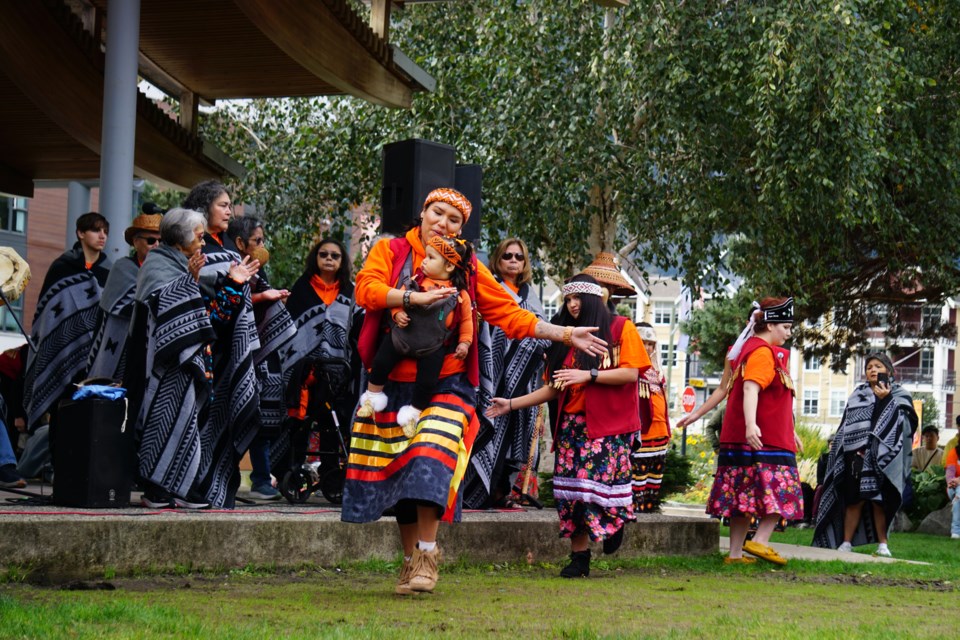What kind of world do we want to leave for our children and grandchildren? How can we take care of the land and waters we all depend on?
The Sḵwx̱wú7mesh Úxwumixw (Squamish Nation) has created a plan to answer those questions. And it’s called the Climate Legacy Strategy.
This strategy lays “the foundation for sustainable development, environmental stewardship, and community resilience across their territory” reads the 35-page long PDF.
This strategy is built upon four pillars, which outline the key areas for action needed to create a healthy and resilient climate. According to the Nation, each pillar includes clear visions, goals, and steps to guide the Nation's efforts.
One of the features of the strategy is its focus on two distinct areas: actions within the Nation’s jurisdiction and areas where they can collaborate through co-jurisdictional influence.
How it all started
The strategy lays out a plan “to tackle climate change in Sḵwx̱wú7mesh Aysáy̓ch (Squamish Territory).” It intends to support global climate goals, including the target of reaching net-zero emissions by 2050, as outlined by the United Nations.
This work began in July 2019, when the Sḵwx̱wú7mesh Úxwumixw council declared a climate emergency and set initial goals to address the crisis.
The council also decided to create the Climate Legacy Strategy to guide policies and projects aimed at sustainability.
By the fall of 2021, a team working under the Rights and Title Department (Ta na wa Yúus ta Stitúyntsam̓) started a two-year process.
The Four Pillars
The Climate Legacy Strategy is built on four foundational pillars:
- Low-Carbon Infrastructure: The Nation plans to implement high-efficiency standards for all new buildings, reduce emissions through retrofits of existing structures, and expand access to low-carbon transportation options like electric vehicles and public transit.
- Land and Water Stewardship: With a goal to protect 30% of the territory by 2030, the strategy includes restoring degraded ecosystems and expanding land and water monitoring through an enhanced Guardianship Program.
- Green Economy: The strategy aims to double the number of green jobs available to Nation members by 2040.
- Community Resilience: Emergency preparedness, food security, and public health form the backbone of this pillar.
Quick wins
Eleven priority actions are already underway, including banning new fossil fuel projects, creating more green spaces, and launching a Climate Warriors Program.
Banning new fossil fuel projects raises questions about how this goal aligns with the Nation's regulatory agreement and impact benefit agreement in the Woodfibre LNG project.
The strategy does not address whether this collaboration impacts its broader climate objectives but emphasizes that no new fossil fuel projects will be approved. Existing agreements, such as those made with Woodfibre LNG, "cannot be retroactively altered", according to a spokesperson for the Nation.
The Nation hopes that these initiatives spark immediate change while the broader strategy is rolled out.
One community member put it in the PDF, “Our responsibility as Indigenous people is to the land. We are the land, and the land is us.”
Community launch events
The Nation is inviting Nation members to celebrate the launch of its Climate Legacy Strategy this January. To mark the release of the strategy, two celebratory events will take place:
- North Shore:
Date: Wednesday, Jan. 15, 2025
Time: 5:30–8 p.m.
Location: Chief Joe Mathias Centre - Squamish Valley:
Date: Thursday, Jan. 23, 2025
Time: 5:30–8 p.m.
Location: Totem Hall
The events will feature presentations on the Climate Legacy Framework, a summary of community input gathered during the process, and details of the final strategy.
To learn more, visit the Nation’s Facebook page.
Note: The article has been updated to clarify that the Sḵwx̱wú7mesh Útxwumixw has a regulatory agreement and impact benefit agreement with Woodfibre LNG, not a partnership.
Bhagyashree Chatterjee is The Squamish Chief’s Indigenous affairs reporter. This reporting beat is made possible by the Local Journalism Initiative.



